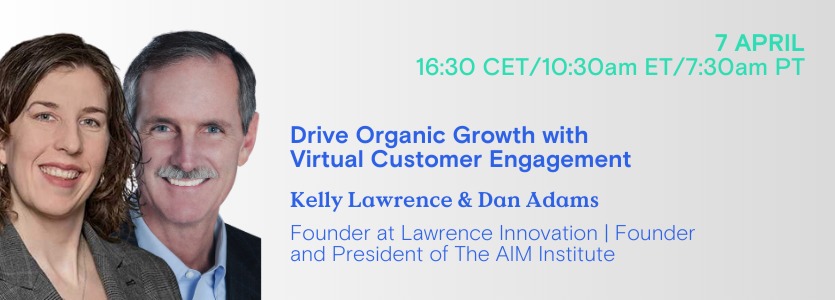Champions in any sport know which muscle groups to build… with balance. A rock climber with great finger strength also needs superb core strength. You have two primary innovation muscle groups… one to understand customer needs and one to meet those needs with your new products. Your B2B business might be spending tens of millions of R&D on the latter muscle group. Keep these “meeting” muscles in shape… but start building your “understanding” muscles. That’s how you get to the top ahead of competitors.
More in article, New Product Training: Time to Build Growth Muscles.
This is how one client described his experience with one of his company’s initiatives. Take understanding customer needs, for example. Many companies discuss and debate this year after year, but the wheels just keep spinning without traction. Nothing worthwhile happens until a) people are trained, b) metrics are established and c) new behaviors are rewarded. As Peter Drucker said, “Plans are only good intentions unless they immediately degenerate into hard work.”
More in article, New Product Training: Time to Build Growth Muscles
Do you clearly distinguish between technology development and product development? Technology development is science-facing, while product development is market-facing. Technology development turns money into knowledge, and product development turns knowledge back into money. Keep technology and product development separate if you want to avoid confusion and inefficiency. Milestones on a Gantt chart are great for product development, but good luck scheduling technical breakthroughs in your lab.
More in article, Timing is Everything (p6).
As explained by Tony Ulwick in What Customers Want, the term customer “needs” can be confusing. It’s best to separate what customers want into outcomes (their desired end-result, or the “what”) and solutions (your answer to their need, or the “how”). Keep your interview focused on their outcomes, not solutions. If they offer a solution, simply ask, “What would that do for you?” Poof: You’re back into outcome space where you want to be.
More in article, Discovery Interview Blunders that Frustrate Your Customers.
You can triple profit growth by engaging customers in your innovation process. Do this by “moving up” in these 6 levels of customer engagement: 1) our conference rooms, 2) asking our experts, 3) customer survey, 4) qualitative VOC interviews, 5) quantitative VOC interviews, and 6) B2B-optimized VOC interviews. ... Read More
In the best B2B interviews, you ask “What other problems do you see?” or “What would your ideal world look like?” The customer leads the interview—not you—because you never know what they’ll say next. But allow some silence: Don’t fill the void by saying, “for example, would it help if…?” Your patience may be rewarded with a customer need you would never have heard otherwise… one that could lead you to develop a blockbuster product. Silence—and the thinking it allows—can indeed be golden.
More in article, Discovery Interview Blunders that Frustrate Your Customers.
Innov8rs monthly training for April will be hosted by AIM president, Dan Adams along with AIM coach, Kelly Lawrence. In this session, “Drive Organic Growth with Virtual Customer Engagement“, Dan and Kelly will share research on the key growth drivers to focus on to deliver results. They’ll also share tips for how to engage customers ... Read More







